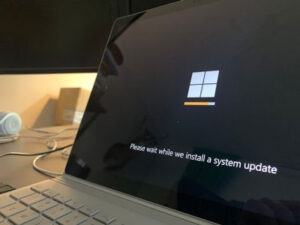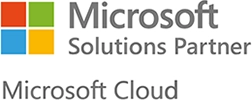We’ve all been there, like that comfy pair of slippers that have been keeping your feet warm for years, every piece of technology eventually reaches the end of its serviceable life. This scenario is all too familiar with Microsoft and Windows.
And of course, that Windows 10 Home or Pro retirement date we’ve all been dutifully ignoring (or perhaps nodding along to while thinking about lunch) has snuck up on us all too quickly. What once seemed like a distant concern has suddenly become an urgent reality that demands immediate attention.
When Microsoft pulls the IT support plug
So here we are – Windows 10 Home and Pro editions are scheduled to reach their End of Life on 14 October 2025. That’s less than four months from now. For those of us in the IT world, this date has been lurking in our diaries for ages, but for many business owners, the significance of what this actually means might not have fully registered yet.
All Windows 10 editions – Home, Pro, Enterprise, and Education – will reach their end of support on the same date. Unlike previous Windows versions where business editions often enjoyed automatic extended support periods, this time Microsoft is taking a different approach. While paid Extended Security Updates will be available, the free support period ends universally on 14 October 2025.
The approaching deadline means businesses need to avoid falling into the trap of thinking “we’ll sort it out later” and then finding themselves scrambling at the last minute. Unlike previous Windows transitions where extended support periods provided breathing room, this deadline applies universally across all Windows 10 editions.
Why worry about tomorrow’s tech headache today?

Well, here’s the thing – while your computers will indeed keep running, that’s rather like saying your car will keep driving after its MOT expires. Technically true, but you’re heading into increasingly risky territory with every passing day.
The reality is that four months fly by in terms of business IT planning. Operating system transitions don’t happen overnight, especially when you’re running a business with multiple workstations, specific software compatibility requirements, and budget constraints to consider.
Not only that, many businesses are only just getting comfortable with Windows 10 after upgrading from Windows 7. Finding out that another transition is needed so soon isn’t the news anyone wants to hear, but it’s far better to start planning now than to be caught off guard as the October deadline approaches.
Planning ahead allows you to spread the costs across the coming months, test compatibility with your business-critical applications, and ensure a smooth transition that doesn’t disrupt your day-to-day operations. It’s rather like knowing your office lease is up in four months – you wouldn’t wait until the final week to start looking for new premises, would you?
The business risks of outdated Windows systems
For starters, once Windows 10 Home and Pro reach their End of Life date, Microsoft will stop releasing security updates and patches. Without these important updates, your systems become increasingly vulnerable to newly discovered security threats. It’s rather like continuing to use the same lock on your front door when everyone in the neighbourhood has been given a copy of the key, hardly the most reassuring setup for your business.
Then there’s the compatibility conundrum. As time marches on, software vendors often stop supporting their applications on outdated operating systems. That shiny new accounting package your finance team relies on? There’s no guarantee it will continue to work properly, or even at all, on an unsupported operating system.
Let’s not forget compliance concerns, either. Depending on your industry, running unsupported operating systems might put you on the wrong side of regulatory requirements. For UK businesses, this could mean issues with everything from GDPR compliance to industry-specific regulations that have been updated post-Brexit. For businesses handling sensitive data, and these days, who isn’t, this could mean failing audits or even facing penalties. It’s rather like driving a car that wouldn’t pass its MOT; you might get away with it for a while, but eventually, there will be consequences.
Finally, there’s the productivity angle. As systems age and compatibility issues mount, your team might find themselves spending more time wrestling with technical gremlins and less time doing what you actually pay them for. Those five-minute start-up delays and frequent system crashes add up surprisingly quickly across an entire workforce.
Getting ready well before the deadline

many expect allows you to factor this into your immediate IT planning and budgeting.
Next comes the assessment phase. You’ll want to take stock of all the systems running Windows 10 in your organisation. Which machines will need upgrading? Which might be replaced entirely? Are there any critical applications that might face compatibility issues with Windows 11 or would benefit from moving to cloud-based alternatives?
Then there’s the transition timeline. Rather than waiting until the last minute and attempting a frantic mass migration (which, trust us, is about as much fun as having a picnic during a thunderstorm), we recommend a phased approach. Consider upgrading systems gradually, perhaps starting with the most critical or security-sensitive machines.
Budget planning is another crucial element. Hardware upgrades and potential software replacements represent significant investments for many businesses. With the current economic climate in the UK, careful IT budget planning is more important than ever. By planning your transition over the next few months, these costs can be managed more effectively, rather than landing as one massive financial wallop.
Finally, there’s the training consideration. New operating systems mean new interfaces, features, and workflows for your team to master. Building in time for proper training ensures a smoother transition with less productivity disruption.
Extended Security Updates: A temporary lifeline
It’s worth noting that Microsoft has introduced an Extended Security Updates (ESU) programme for Windows 10, offering a temporary reprieve for those who need more time. For home users, this is available for a single year at a modest cost, while businesses face escalating per-device fees that increase significantly each year over a three-year period.
While this provides breathing room, it’s essentially paying to keep an increasingly outdated system on life support rather than embracing the benefits of a modern operating environment. Think of it as patching a leaky roof rather than investing in proper renovation, it might keep the rain out temporarily, but it’s not a long-term solution.
Unexpected benefits of forced technology changes

Moreover, planning for an OS transition provides an excellent opportunity to review your entire IT infrastructure. It’s rather like when you finally tackle that overflowing messy cupboard – you didn’t realise how many unnecessary items and mysterious keys to long-forgotten locks you’d been hoarding until you were forced to sort through it all. Many of our clients have found that preparing for an operating system transition led them to discover inefficiencies, redundancies, and opportunities for improvement throughout their IT systems. Sometimes, it takes a looming deadline to prompt the kind of thorough review that ultimately benefits the entire organisation.
We’ve helped hundreds survive Windows changes (and lived to tell the tale)
At PurpleJelly, we’ve guided countless businesses through operating system transitions over the years. From Windows XP to Windows 7, from Windows 7 to Windows 10, and now the transition to Windows 11, we’ve seen it all and helped our clients navigate each change with minimal disruption.
The relatively short timeline until Windows 10 End of Life might feel overwhelming, but it’s exactly the type of challenge our team can handle as easily as a tackle on a rugby pitch, without the mud, breaking a sweat or resulting cauliflower ears. We can help you develop a comprehensive transition strategy that takes into account your unique business needs, budget constraints, and operational requirements.
From hardware assessments to application compatibility testing, from phased implementation plans to staff training programmes, we provide end-to-end support for this significant change. Our experienced team knows exactly how to minimise disruption while ensuring your business remains secure and compliant.
Remember, while the 14 October 2025 EOL date might be approaching quickly, the most successful transitions are those that begin with early planning. Like preparing for any big change in business, the earlier you start mapping your route, the smoother the journey will be.
So if you’re worried that your comfy and familiar Windows 10 setup is going to leave your business out in the cold come 14 October 2025, give us a call on 01252 856230 or ping us an email. We’ll happily help you find a solution that fits just right, and keeps your business running smoothly long after Microsoft pulls the EOL plug.





